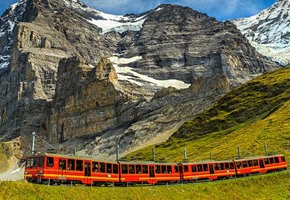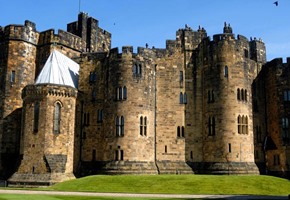Myanmar, also referred to as Burma, is a fascinating, untouched eastern destination, filled with the promise of an unknown adventure, that serves to transport visitors through time, with a culture that has received little outside influence and westernisation. The typical offerings are here - scenic vistas, luscious rural expanses, breathtaking architecture and sleepy undiscovered villages - but there is so much more here to explore than most destinations could dare to boast. For more world-weary or experienced travellers who have 'seen it all', Myanmar offers a fresh escape: new landscapes, a vastly different perspective, and a way of life that is hard to find anywhere else. A landscape littered with the spires of Burma's estimated 10,000 temples, this is a world where old-fashioned (Buddhist) values reign, traditional activities still thrive, and the most recent outside influence comes from British colonisation - of the 19th century. Tea-drinking and scenic mountain railways are two of the souvenirs from English invasion, but other than this small take-aways and the common use of the dollar, global influence (particularly post-20th century) is blissfully scant.
As far back as Rudyard Kipling's days, Burma has provided ample fascination for visitors; 'it will be quite unlike any land you know about', the author promised, and the 21st century has so far not undone this guarantee. The last bastion of authenticity in a quickly homogenising world, Myanmar feels preserved - but it likely won't last. With sanctions lifted and borders opened, this developing country may soon be captured by commercialism, much as the rest of Asia has been. Whilst some home comforts (internet access, for example, which is becoming more widespread) are welcome, others have an intrusive presence; only time will tell if McDonalds and their ilk intend to spread fast food across this charming nation, but if precedent is anything to go by, Burma is well worth visiting whilst it lasts.
You may be wondering what all the fuss is about - it is true that there are many off-the-beaten-track destinations that offer the quaint, unsullied appeal - but it's the moments of local activity that really bring Burma to life. This is where the country's heart truly lies - in the people that have forged it. Watch fishermen scoop conical nets through the waters of the Irrawaddy River, following the motions of their ancestors without much update over the centuries, or see the floating gardens and perched houses of Lake Inle, and you are confronted with the notion that this is a people who are content with pre-millennial lifestyles that pay attention to Myanmar's ancient roots. There is a sincerity here, of a world that isn't fabricated for effect or packaged for foreign consumerism: this is the genuine, unfiltered Burma, the only way it knows how to be.
The country's unabashed devotion to Buddhism is a bold hint of the Burmese sense of dedication to their ideas; beyond the sheer abundance of temples and stupas, the capital of Mandalay is also home to 'the word's largest book' - a series of incredible marble tablets, inscribed with the entire text of the Tipitaka Pali Canon - the oldest Buddhist teachings still in existence. The defiant construction of this now-treasured monument was an act designed to preserve what was most important to Burmese culture, during a time of threat, as the British colonised the country (with rather less success than take-overs elsewhere in Asia), and the very fact of their existence points to the local reverence for scripture and tradition. Further back in the nation's past, there are even bolder actions to substantiate the claim: Amarapura, the ironically named 'City of Immortality', was abandoned as the capital in favour of Mandalay, owing to a prophecy, not in the dark recesses of history, but in 1857. This is a place where ideas are afforded physical space, where sacred concepts manifest and grow in a tangible way - just look at the golden Buddha of the Mahamuni Pagoda, its ever-expanding silhouette becoming more misshapen as worshippers apply yet more goldleaf to the statue as a sign of worship. Here, belief shapes (or corrupts) reality, with a scrupulous dedication and faithfulness that is rarely seen in 21st century societies, and that offers a rude and unpolished charm.
It's certainly possible that Burma's long-standing tradition as a refuge of heritage will withstand the flood of global innovation, even now the country is no longer sequestered from outside influence; to resist change would live up to the narrative of this unspoiled nation. It is an enchanting thought, that this may be the final frontier against the creep of western trends slowly making adventure travel more mundane, but why risk the wait? Capture Myanmar at its best by visiting soon.






